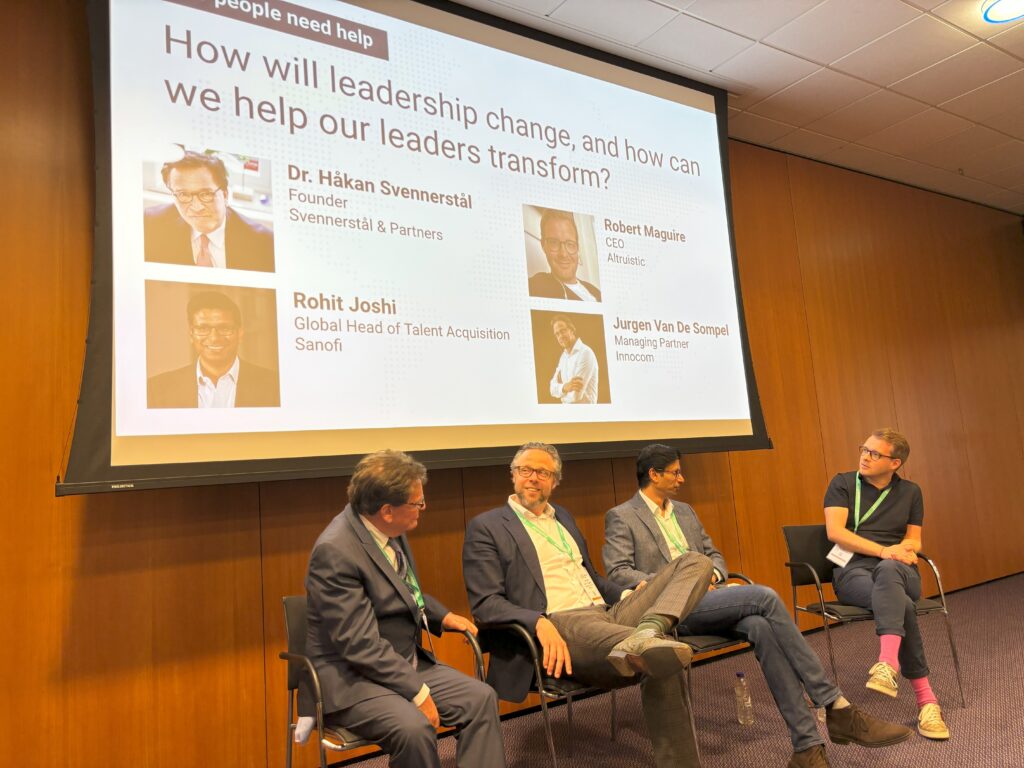We’ve reached an inflection point for businesses focused on driving equality and equity at work. Some progress has been made: 83% of businesses have accelerated their DE and I efforts in the past two years; 96% of firms have a diversity or equality policy in place; and the FTSE Women Leaders Review found the number of women who sit on FTSE 350 boards has reached its target three years early, with women comprising more than 40% of director roles at the UK’s largest listed companies. But there’s a critical factor that risks derailing this progress: the grey area of Hybrid work and ‘back to the office’ mandates. It’s not enough to introduce a Hybrid or Flexible Work framework then sit back – businesses must commit to connecting and continuous learning, or face the next great work divide.
Some businesses – ours included – have formalised a flexible working strategy and continue to maintain connections and a strong company culture with their employees. Others have built frameworks for flexible working and believe they’ve ticked the box. Some are still vague in their expectations around hybrid and flexible work, while mandating a set number of days in a traditional workplace has become the norm for others.
The danger here is that, without a formal policy and continuous learning mindset, companies will see a return to ‘presenteeism’, with employees rated, trained and promoted according to their visibility in the workplace. One study found remote workers are 50% less likely to be promoted than those regularly in the office, and data shows those most likely to be disadvantaged are minority groups, already most impacted by workplace inequity.
Hybrid can remove some barriers for minority groups
Hybrid work has had the biggest impact on traditional working practices since Henry Ford trialled the 9-5 working day almost a century ago. Office for National Statistics figures show 28% of workers are hybrid, and demand for hybrid roles outstrips supply. Employees love the ability to flex and advance their careers while managing personal commitments and interests, and it’s proven that hybrid work has had a major impact on health and wellbeing, with research finding that flexible workers have better physical and mental health and sleep better.
In hiring, hybrid work helps remove geographic restrictions. Companies can look beyond their office vicinity to recruit talent, and workers are no longer restricted to live in expensive urban areas, or make a costly daily commute. Crucially, it’s helping businesses remove barriers that might stop minority groups from reaching their full potential. For example, 66% of workers with disabilities or long-term conditions would prefer to work remotely 80-100% of the time, according to research by the Work Foundation. The study refers to workers with autism as an example, who like having the ability to control lighting and noise levels at home and find this more difficult in an open-plan office. Black, Latinx and Asian workers in one report all said they felt a greater sense of belonging in a hybrid work environment.
It’s also a working model preferred by older workers, with 66% of over 55s preferring some form of hybrid working, according to one study; and research has also found the flexibility that hybrid work can provide better supports women, especially those caring for older or younger family members.
Without formal policies, we risk regressing to the ‘jacket on the chair’ culture
Pre-flexible work – for many, pre-pandemic – some companies had such a strong culture of ‘presenteeism’ that workers would leave jackets on their chair backs all night, to look as though they were still present, committed and hard working. I really hope that, for most companies, this culture of fear no longer exists, but I suspect it might. And unless businesses make a stand; stop disproportionately benefiting those in the office; and create formal flexible working policies, we may well see its toxic return.
Some industries, some businesses – and some leaders – can’t shake the old-fashioned viewpoint that ‘working from home is shirking from home’. There’s evidence that minority groups are more likely to be impacted by this perspective: 60% of women in one survey said working remotely led them to feel excluded from important meetings. 94% felt that either requesting or taking advantage of flexible working opportunities would impact their chances of promotion; and three times as many women (35%) as men (12%) in another study felt that hybrid working made them feel they were ‘out of sight, out of mind’.
Other minority groups are finding the same concerns. The Work Foundation found that 70% of people with disabilities they questioned felt that not working in a hybrid way would negatively impact their health. Almost one in five (20%) said they’d had a request for hybrid rejected, while 70% of people they questioned with two or more impairments were concerned they would be ‘overlooked for training or stretch opportunities’. There are very real concerns around remote workers feeling isolated, lonely and disconnected from their teams. Vague hybrid directives and outdated cultures which value presenteeism really don’t help.
Right now, we’re teetering on the edge of a precipice: we are dangerously close to falling back into old ways of working, benefiting those that can get to a traditional workplace setting and discriminating against those minority groups for whom hybrid working is a lifeline. If we’re to make progress and drive real change for a fairer, equitable world, businesses need clear frameworks for hybrid or flexible working. They must:
- Regularly assess the effectiveness of hybrid frameworks, and adapt as they go along. Understand that every individual has different needs which must be met for them to feel included and heard.
- Empower employees with the right tools – software, hardware and digital infrastructure to carry out their roles effectively and equally regardless of location
- Be clear around expectations for an on-site/remote balance. At Colt for example, we have Connection Days, when teams are encouraged to come together for discussion and learning
- Make sure the mechanisms are in place for continuous feedback
- Build and communicate access to support tools and training, such as virtual networking groups for employees with different needs or concerns
- Work hard to build teams and celebrate performance
- Be intentional around inclusion during meetings: getting together with some colleagues in a meeting room and others joining remotely can be challenging.
75% of respondents in a McKinsey study said they prefer flexible working. Engaged employees are happier, perform better – and deliver a better customer experience. It’s now down to businesses to create the right physical and digital environments where all employees will thrive.





